- What is business branding
- What is the difference between big business and small business branding?
- Why Branding is Important for Any Business?
- How to Build Small Business Branding from Scratch
- 5 Small Business Branding Examples
- Best Branding Strategies for Small Businesses
- Small Business Branding Ideas & Tips
- Final Thoughts on Small Business Branding
- FAQs about Branding for Small Businesses
How to Build Small Business Branding — Strategies, Examples, and Ideas

Branding is not just about the logo and color scheme!
Yes, those two are big parts of overall branding. However, there’s a lot more you should do to create impactful branding for your business.
For a small business like you, branding can be the biggest factor to help you stand apart from the competitors.
So, let’s walk you through all the essential branding strategies, examples, insights from successful entrepreneurs, and a step-by-step guide on how to build small business branding.
What is business branding
Business branding is a way to connect with customers by creating a relationship that builds trust. Many people, 81%, want to trust a brand before they decide to buy something, so having a strong brand is important for keeping customers loyal and attracting new ones.
Branding helps you show your unique identity to the public, emphasizing the quality of your products and making a lasting impression. It usually takes 5 to 7 times for someone to notice your brand, so you should look for new and creative ways to promote your products and connect with people. This helps you stand out from your competitors and helps your business grow.
What is the difference between big business and small business branding?
Small businesses don’t have as many resources as big businesses, so they might have fewer options for marketing strategies. However, being smaller has some advantages that can help build their brand.
Here are the main differences:
- Resources: Small businesses usually have tight budgets and staff who handle multiple roles. They might not have fancy tools and use more affordable options instead.
- Audience reach: It's tougher for small businesses to reach a big national or international audience, so they focus more on local or specialized marketing.
- Flexibility: Large companies tend to stick to strict plans and may be slower to adapt to new trends, while small businesses can change quickly and be more creative.
- Strategy: Small businesses can use local marketing and tell genuine brand stories, while big businesses often rely on broad campaigns and focus on long-term brand recognition.
- Customer relationships: Large companies often struggle to create personal connections, making it harder to build customer loyalty.
- Brand image: Smaller businesses need to work harder to establish their presence in the market, while larger companies benefit from already having a strong reputation and polished image.
Why Branding is Important for Any Business?
Whether your business is small or big, branding is an essential element to grow and scale your business. Without branding, a business is like a person with no identity.
-
Gives your brand a unique identity
Let’s start with an example of one of the biggest brands for some inspiration. When you think of Nike, one of the first things that may come to your mind would be “athletes”.
That’s because Nike has created its branding around the philosophy of uplifting athletes. Similarly, you can use branding to create a unique identity for your small business.

Nike’s mission statement shares how the brand aims to bring inspiration and innovation to every athlete and the brand’s belief that everyone in this world can be an athlete.
Pro tip: While it’s okay to research, learn, and get inspired by the branding of big names in the industry, don’t simply copy their branding style. Those brands may have had a different branding when they were a new business. So, just try to understand their thought process when reviewing their branding and then develop your own thought process for your brand.
-
Helps build relationships with customers
62% of consumers say they stay loyal to a brand when they have trusted it for a long time. So, if you’re looking at your business from a long-term perspective, you must invest time and money in branding — of course, within your small budget! It’ll eventually help you create better connections and engagement with your customers.
-
Helps raise awareness of your business
There are tons of businesses in the world. If you want your potential customers to know about your brand, you need to build a unique branding of your business. You can make the market talk about your brand with some creative branding strategies.
-
Increases sales and revenue
Just to be clear, branding may not have an immediate or direct impact on your sales and revenue. However, it’s a crucial factor to increase your sales in the long run. As you increase the brand awareness and loyalty of your customers, it’ll eventually help you increase your revenue and profits too.

How to Build Small Business Branding from Scratch
There are many strategies you can implement for branding and we’ll talk about them later in this article. However, you must pay special attention to the three fundamental aspects: WHY, WHO, and WHAT.
So, let’s go through this step-by-step branding process and see how those fundamental aspects fit into the process:
Step 1: Write Your Brand’s Mission, Vision, and Values.
This step covers the underlying principles of your overall branding. But how do you define the mission, vision, and values?
Focus on the “WHY”.
Ask yourself — Why did/would you start your business?
The answer to this question will help you define the core purpose of your brand and you can use it to write your brand’s mission and vision statements.
Now, think about how you would execute your business and the value you would want to maintain when running your business.
All these aspects will also guide you in your future brand’s messaging.
Step 2: Identify “WHO” Your Brand Would Serve
Ask yourself — Who are your customers (or potential customers)?
Create buyer personas, i.e., fictional characters based on the research of your potential customers. Know and understand your target customers as much as possible to create impactful branding that can touch their hearts or minds.
For example, Meow Howl’s target customers are pet lovers. So, the brand has named its loyalty points “Pet Point”. Even small details like these can go a long way in building a relationship with your customers.

Step 3: Create Your Brand’s Color Scheme.
“WHAT” do you want to sell?
When branding your business, many factors depend on the product/service you want to sell. You might think — “I already know what I want to sell!”
Yes, you do! However, we’re talking about going at a deeper level to answer this question. For example, many clothing brands focus on eco-friendly and sustainable clothing materials to protect the environment, and thus, they may choose to go with earthy colors in their branding.

Also, you could choose your color scheme based on your product. For example, Heinz — a brand that sells tomato ketchup — uses red as its primary color in its branding.
Learn more: 10 Best Shopify Color Schemes + Color Palette Ideas
Step 4: Define Your Brand’s Tone of Voice.
In simple terms, a brand’s tone of voice is how you speak to your customers. This factor plays a crucial role in properly conveying your brand message.
Here are a few examples of commonly used tone of voice:
If you’re managing a small team, you should create a guideline on your brand’s tone of voice and share it across the team. This way, you can ensure a consistent tone in messaging regardless of who is conveying the message on behalf of your brand.
Step 5: Create a Brand Logo.
“A picture is worth a thousand words.”
This phrase very well describes the importance of a brand logo. A brand logo is one of the ways to express your brand’s philosophy succinctly.
Keep in mind — your brand logo is one of the first things your customers will observe in your brand. Make sure it leaves a lasting impression in your customers’ minds.
That said, you don’t need to go too fancy to create something out of the world. Some of the most popular brand logos in the world have a simple brand logo design. So, don’t go for a complex design either.
Step 6: Design Your Website.
Okay! So, we are now coming to your brand's most important digital asset — your website. Unlike physical stores, an online store makes it way easier to create a premium feel for your brand without breaking the bank.
If you’re using Shopify, you can use GemPages to design your store and give it premium branding. GemPages offers an AI-powered image-to-layout feature and drag-and-drop editor.

GemPages makes it possible to design your store on your own. Just simply use the readily available and professionally designed page templates from the library. From the homepage to product pages to the About Us page and much more — GemPages can do it all!
Step 7: Write Persuasive Copy and a Catchy Tagline.
Your website copy represents your brand’s style and personality, including the tone of voice as well. Once again, knowing your customers is crucial to writing your copy too.
Especially the above-the-fold copy is your opportunity to grab the attention of the website visitors and make them explore more on your website. However, make sure to not use too much jargon in our copy and keep it simple for anyone to understand.
Writing a brand tagline is like expressing the unique selling proposition in the least words possible. Ideally, your tagline should be around 4-5 words only, but if needed, you can go for about 7-8 words.
Step 8: Create Branded Product Packaging.
So, we mainly talked about all the branding elements on a digital storefront. However, let’s not forget the branding on your product packaging.
After all, customers are going to see your product package even before they see your physical product. Create your branded packaging to make your products look premium.
Pro tip: Along with the product package, you can also send a handwritten thank you note to your customers and let them know how else they can support your small business, e.g., encouraging them to follow your business on social media or sharing the product review.
If you’re starting a service-based business or planning to sell digital products only, you might think this step does not apply to your business. Well, it’s not entirely correct.
Although you don’t need to deliver a physical product, you’re still delivering your product in some sort of digital form — and that digital form becomes your packaging.
For example, if your digital product is sent through email, make sure the email is designed with your branding and a thoughtful message to thank the customer for their purchase.
All these 7 steps that we discussed are fundamentals of branding and you should take care of these when starting your small business. However, remember that branding is an ongoing activity and you may need to work on new strategies with time.

5 Small Business Branding Examples
1. Encircled
Encircled is a Canada-based sustainable clothing brand founded by Kristi Soomer.
During her busy work schedule, Kristi has to struggle to find clothes that are not only stylish but also comfortable to wear. Thus, Kristi founded Encircled to resolve this problem.
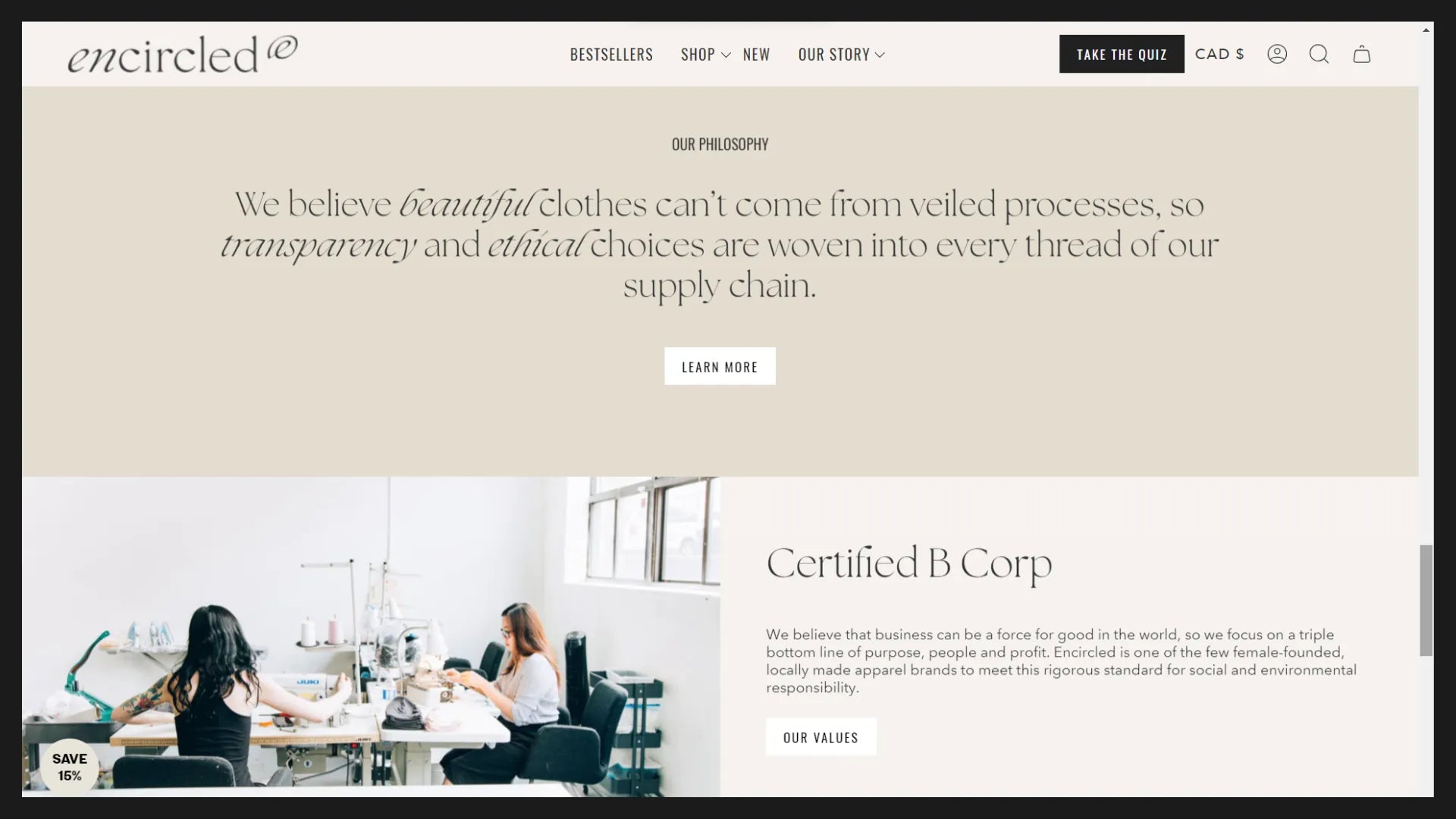
On the “Out Story” page of Encircled, Kristi has shared her story about how she founded this brand.

Here’s the advice shared by Kristi Soomer for new eCommerce entrepreneurs in her interview with Shopify:
“Know your customers. Find out everything you can about them and form strong bonds with your customers. Consistency is key. If you're not showing up regularly in social media, newsletter or any other channels, you probably shouldn't have that channel active. Lastly, have a story that people can connect with. This will help eliminate the traditional barriers to buy online.”
2. Partake Foods
Partake Foods was created to offer delicious and allergy-friendly cookies with its mission to provide healthy and safe food.
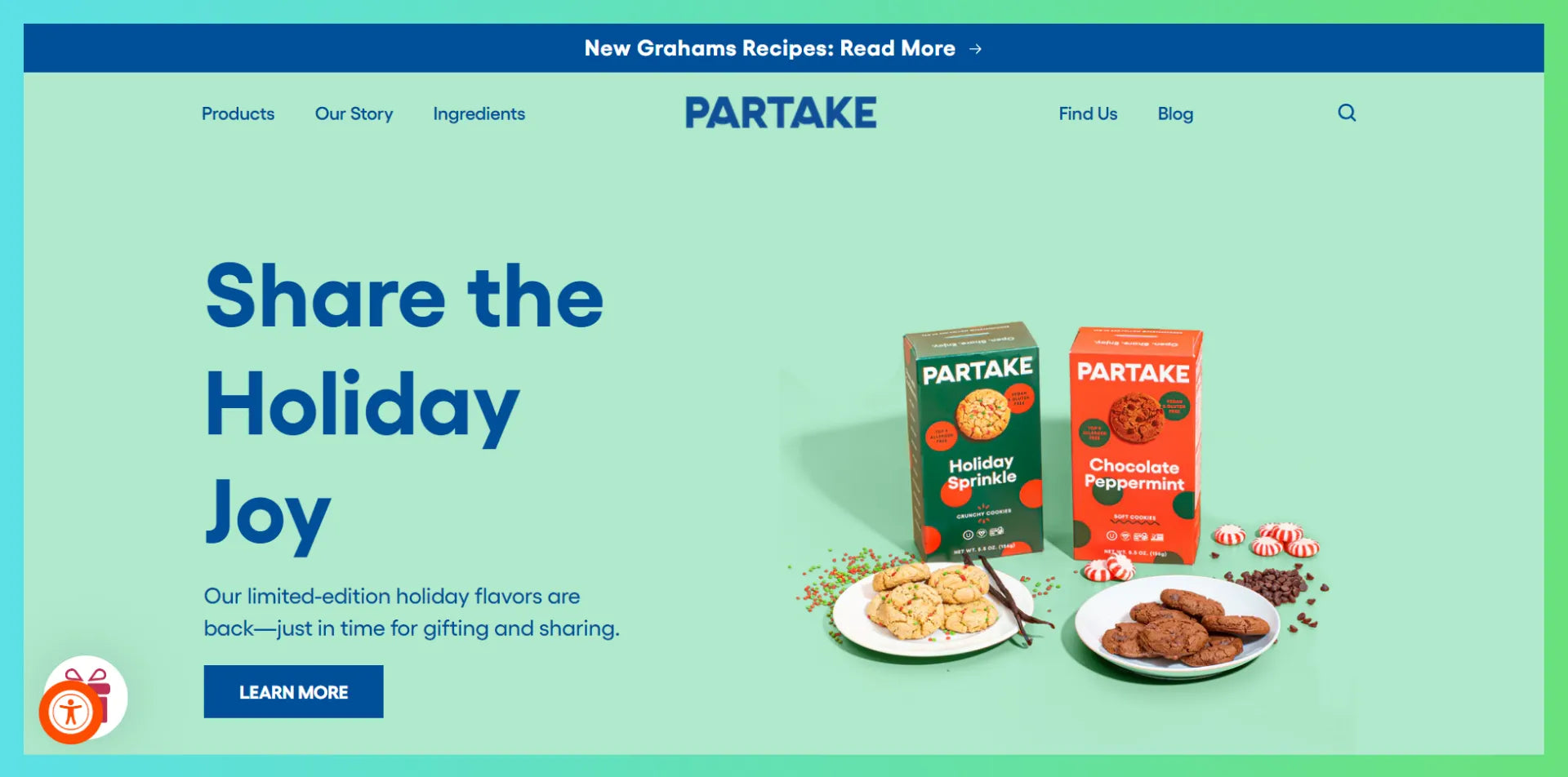
Denise Woodard founded Partake Foods when her daughter was diagnosed with food allergies. On the “Out Story” page, the brand has shared this story.

3. Handgraft
Handgraft is a small business led by designers with a visionary outlook and great branding. The brand sells lifestyle accessories that are made in Italy.
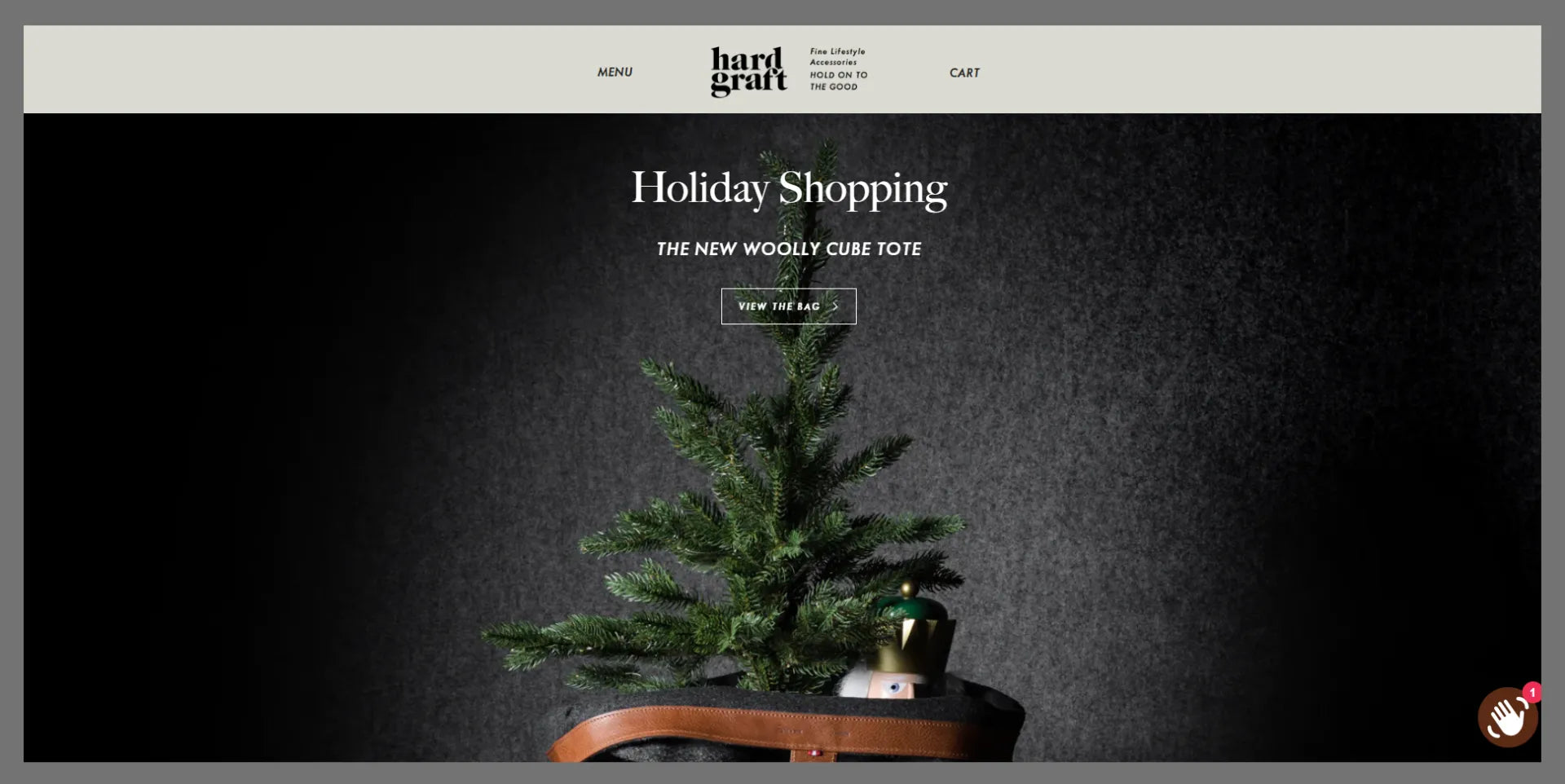
The brand uses a consistent color scheme throughout the website and the earthy colors go nicely with its products.
On its About page, the brand explains how the product material is sourced and how Handgraft creates premium quality products with hand-selected materials.

4. Dropps
Dropps offers powerful cleaning products such as laundry detergent, dishwasher detergent, dish spray, hand soap, and so on. While just looking at this homepage, it can be clearly seen that the brand has given great importance to branding.

Dropps’ founder, Jonathan, uses a creative approach to share his story behind this brand via a video. Dropps was started from humble family roots, and now, it's become a company that's driven by its mission.
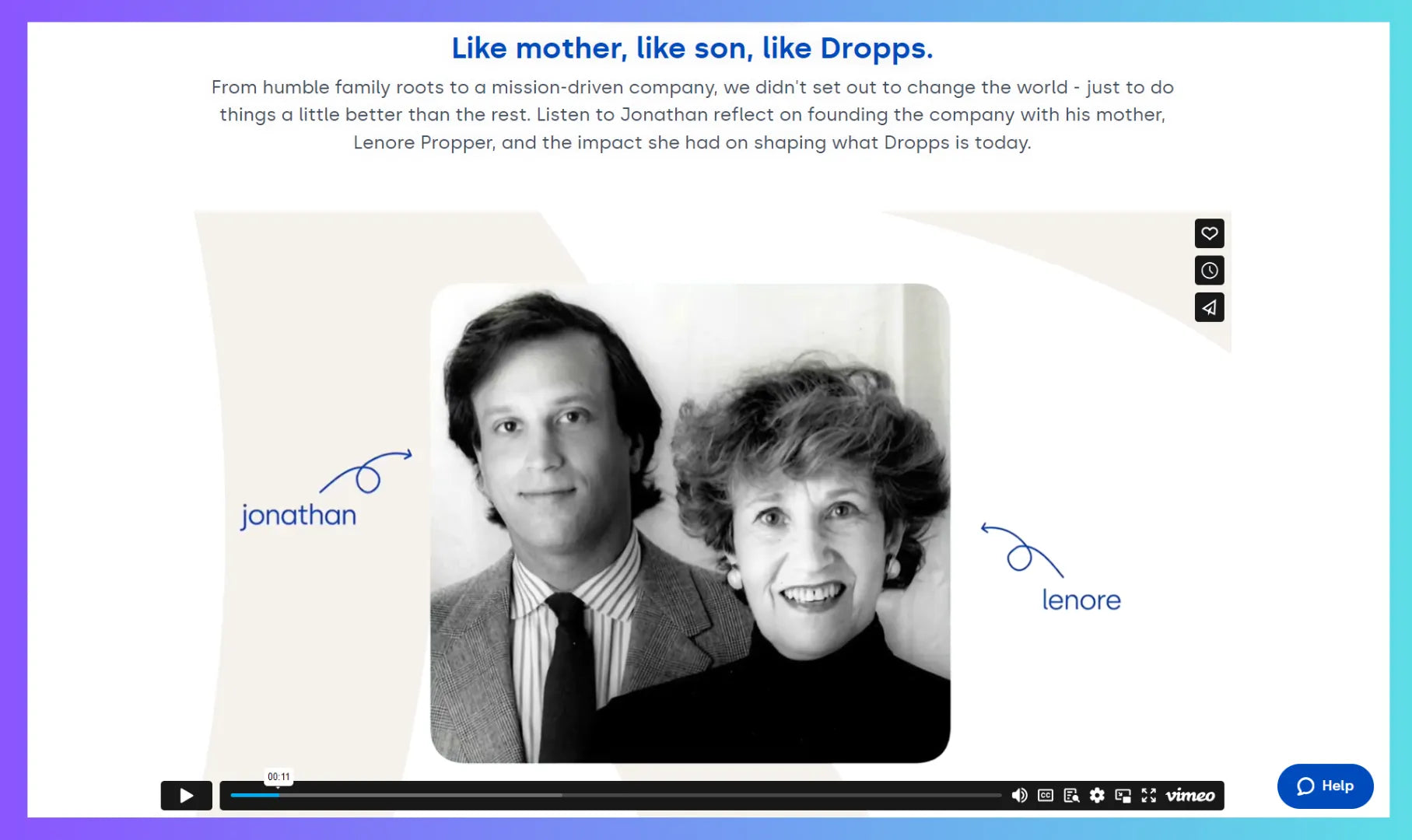
5. Kiramoon
Kiramoon offers various kinds of skincare solutions and tools. Lindsey, the founder of Kiramoon, had to go through a tough time when her mom passed away and she was diagnosed with Generalized Anxiety Disorder.

She wanted to create a skincare brand that could evoke "the magic feeling of self-care" and that's how Kiramoon came into existence. Her story is the biggest highlight of her brand.
One more branding lesson to learn from Kiramoon is the theme of its Instagram. You’ll find a consistent color scheme of red and pink throughout the Instagram page.
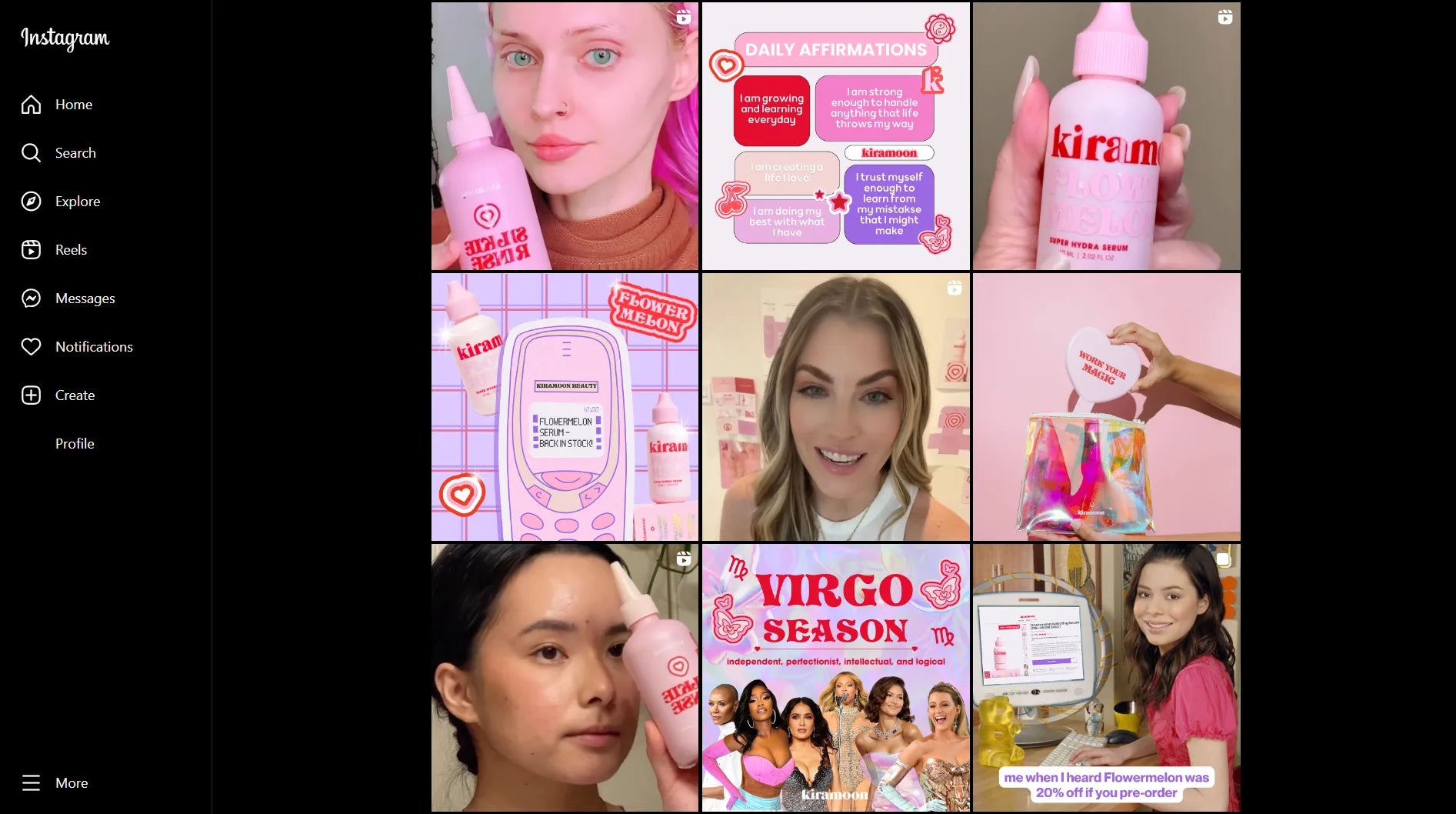

Best Branding Strategies for Small Businesses
-
Research Your Competitors to Stand Apart
Your brand’s positioning must be unique from your competitors, and thus, you need to research how they have positioned their brands in the market.
For example, let’s say your products are more expensive than your competitors because you’re using high-quality material. You can turn this weak point (from the cost perspective) into a strong point for your brand.
Customers tend to attach the pricing to the perceived value of a product. So, your pricing can become a symbol of high quality if you can convey it convincingly through your branding and copy.
-
Be Consistent Across the Platforms
Once you’ve decided on all the platforms that you’re going to use to promote your small business, prepare consistent branding across those platforms.
For example, your platforms may include your website, social media, newsletter, etc. Create a cohesive color scheme and messaging on all these platforms.
Pay attention to even the little things like your brand’s social media usernames or handles. Try to keep the same username across different platforms.
-
Implement a Solid Content Strategy
Content marketing is one of the best and most cost-effective methods of spreading the word about your brand. The content you create and share through your brand also becomes a part of your brand’s identity.
Decide on the core strategy of your brand for what type of content you want to share.
For example, decide whether you want to create entertaining content, informative content, or a mixture of both. The answer to this question may depend on the three factors that we discussed earlier — WHY, WHO, and WHAT. Especially, it’ll depend on your WHO (the target customers).
-
Create Your Social Media Strategy
Social media is a crucial channel to build a loyal audience around your brand. However, it’s important to define your social media strategy for each platform.
By the way, you might feel intimidated to create social media profiles on many different platforms. However, as a small business, you should keep in mind that you don’t need to be on all the platforms.
Research social media to see where your target customers are spending the most time and pick the top 3-4 platforms.
-
Use Storytelling Techniques
In most of the branding examples we discussed in this article has one thing in common — and that’s the story behind the brand.
We humans love reading stories, and even if it’s coming from a brand, a story is likely to get more engagement than other content types. Most importantly, when customers know or resonate with the story behind your brand, it gives them a great reason to buy from your brand.

Small Business Branding Ideas & Tips
-
Be Creative with Your Brand Name
The brand name may sound trivial factor but it’s a critical one. Create a name that’s easy to remember and pronounce. Thus, it also means that you should try to keep your brand’s name as short as possible so that it’s easy to remember.
-
Share Your Brand Initiatives
As a brand, you can take initiatives or participate in other initiatives to contribute toward society or the environment. You can share the details about your brand’s impact through such initiatives on your website and social media.
-
Collaborate with Influencers
If you’re a small business trying to get your brand’s awareness, influencers could be very helpful to spread the word with their relatively bigger audience. Research and shortlist a few influencers and see which one could be suitable for your brand.
Reach out to the shortlisted ones and take their help to create different campaigns to share your brand with their audience. But again, make sure the influencers you choose to work with are aligned with your brand’s mission and philosophy.
-
Offer Human-to-Human Conversations
Since AI has created a buzz in the eCommerce world, it’s become more important than ever to communicate with customers through humans as much as possible. You might be thinking of cutting your costs and using some tools to handle customer service. However, it’s important to understand the cost of losing an existing customer.
-
Create Your Digital Brand Assets
Apart from the brand logo, you can also create other unique brand assets fonts, icons, memes, and so on.
Final Thoughts on Small Business Branding
Your business may start as a “small business”; however, your dream should be to make it a big brand. And that’s why you also need to think like big brands.
As we’ve seen in this article, there are various elements involved in the overall branding, and you shouldn’t take any of those elements lightly.
That said, as a small business owner, you might not be able to get everything up to the mark right from the get-go — and that’s okay. Your branding can evolve with time.




 Facebook Community
Facebook Community Change Log
Change Log Help Center
Help Center












